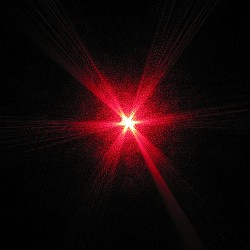 Engineers in a University of Washington fusion-energy lab have started a new company that aims to apply their discoveries to the semiconductor industry. Uri Shumlak, an aeronautics and astronautics professor, and research associate professor Brian Nelson are applying their research on high-energy plasma light from fusion reactors to meet a high-priority need of microchip developers.
Engineers in a University of Washington fusion-energy lab have started a new company that aims to apply their discoveries to the semiconductor industry. Uri Shumlak, an aeronautics and astronautics professor, and research associate professor Brian Nelson are applying their research on high-energy plasma light from fusion reactors to meet a high-priority need of microchip developers.
Plasmas are high-temperature, electrically charged gases in which electrons are stripped from their nuclei, and can generate extreme ultraviolet light. The semiconductor industry has set its future standard for etching circuits on silicon for smaller, high-performance microchips at 13.5 nanometers. Today’s technology cannot reduce that wavelength in a production environment to a level lower than 193 nanometers.
To break through this barrier, chip makers are trying various solutions to create extreme ultraviolet light for etching on silicon, but the ideas so far are costly — one machine costs $100 million — and so far have not been able to produce sufficient power. The duration of the energy spark created is also too short for practical use.
Shumlak and Nelson’s research at Washington has created a process for generating plasma energy from a fusion reactor that is both less expensive and more effective in sustaining an energy beam over a longer period. “It’s a completely different way to make the plasma that gives you much more control,” says Nelson. And they’ve created ZPlasma Inc., a new company in Seattle to commercialize that process for chip makers.
The two Washington faculty, along with the university’s entrepreneur-in-residence and partner Henry Berg who serves as company CEO, believe they have a better solution for semiconductor developers. Today’s industry technology can generate a spark that lasts just 20 to 50 nanoseconds. Zplasma’s light beam lasts 20 to 50 millionths of a second, about 1,000 times longer. “That translates,” says Shumlak, “directly into more light output, more power depositing on the wafer, such that you can move it through in some reasonable amount of time.”
Zplasma has been helped along by Berg and support, both direct and indirect, from the university. An early grant from the university’s Center for Commercialization allowed the team to verify that it could produce 13.5-nanometer light. An award last fall from the Washington Research Foundation, which helps universities and research institutes in the state commercialize their research findings, helped the team shrink the beam-generating equipment from the size of a broomstick to a new version the size of a pin.
Zplasma is now seeking investment financing to integrate their technology into the industry’s mainline production processes.
Read more:
- Nanotech Fabrication Process Developed for Smaller Chips
- Faster, Higher Capacity Memory Chip Developed
- Graphene Electronic Properties Configured for Computer Chips
- Semiconductor Foundation, NSF Fund Nanoelectronics Research
Photo: Nayu Kim/Flickr
* * *

 RSS - Posts
RSS - Posts
[…] Univ. Start-Up Developing High-Energy Light for Microchips […]
[…] Univ. Start-Up Developing High-Energy Light for Microchips […]